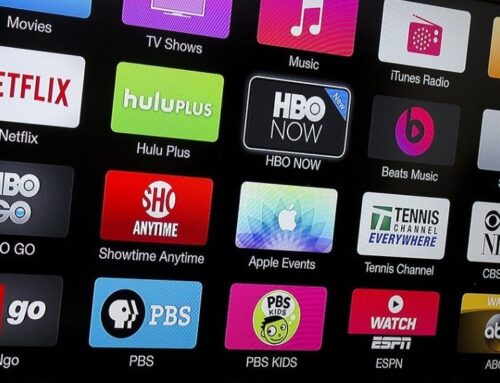The Role of TV Advertising in Black Friday and Cyber Monday Campaigns: Key Insights and Trends
Black Friday and Cyber Monday are among the most significant shopping days of the year, particularly in the United States. These retail events have become increasingly crucial for both brick-and-mortar and e-commerce brands. While digital marketing is a staple for online holiday sales, TV advertising still plays a pivotal role in driving awareness, building anticipation, and ultimately boosting sales during this high-stakes shopping period. In this blog, we dive into the effectiveness of TV advertising in Black Friday and Cyber Monday, analyzing trends, success stories, and data to showcase why it remains a critical element in holiday marketing strategies.
-
The Power of TV Advertising During the Holiday Shopping Season
TV advertising is known for its ability to reach a broad audience, which is especially advantageous during high-impact shopping events like Black Friday and Cyber Monday. Even with the rise of digital channels, TV remains a primary medium that brands use to create excitement and build brand recognition.
- Broad Reach and High Impact: According to Nielsen, television remains one of the most effective mediums for reaching large audiences quickly. Nielsen data shows that during the holiday season, TV viewership spikes as consumers stay home and watch more TV, making it a prime time for advertisers to capture attention.
- Brand Awareness: TV ads can build anticipation for Black Friday and Cyber Monday sales. A well-timed TV campaign can reinforce a brand’s presence in the minds of consumers, especially if the brand is competing with others in a crowded market. TV ads build brand awareness, driving both online and in-store traffic.
-
How TV Advertising Complements Digital Campaigns
In the era of multi-channel marketing, TV advertising has evolved to work hand-in-hand with digital efforts. While digital platforms are effective for targeted engagement, TV’s mass reach helps amplify the effectiveness of online campaigns. Brands leverage TV to drive traffic to their online stores as well as brick and mortar stores, encouraging viewers to take advantage of Black Friday and Cyber Monday deals.
- Omnichannel Synergy: Many brands integrate TV campaigns with digital marketing by including hashtags, social media handles, discount codes or URLs in their commercials. According to Deloitte’s 2023 Holiday Retail Survey, brands that use both TV and digital platforms see a 30% higher conversion rate than those that rely on only one channel.
- Boosting E-commerce Sales: TV ads serve as a funnel driver that pushes audiences to digital platforms. Black Friday and Cyber Monday ads often promote online exclusives and flash deals, encouraging TV viewers to act quickly and make purchases online.
-
TV Advertising’s Role in Driving Foot Traffic on Black Friday
Despite the rise of online shopping, Black Friday remains an important day for in-store retail. TV advertising plays a crucial role in driving foot traffic to physical locations, especially for brands that offer doorbusters and limited-time in-store offers.
- Creating Urgency: TV is a powerful medium for instilling a sense of urgency. Ads often highlight limited-time offers, exclusive in-store deals, and early bird specials, motivating viewers to visit stores. According to the National Retail Federation, about 46% of holiday shoppers in 2024 plan to visit physical stores.
- Localized Advertising: Many brands leverage regional TV advertising to target specific markets, driving foot traffic to their local stores. By using hyper-targeted TV spots, brands can ensure their message reaches the right audience in relevant regions.
Image: © rblfmr/Shutterstock.com
-
Why TV Advertising Works Well for High-Impact Shopping Days
TV ads create a sense of excitement that digital ads can’t always replicate. For high-impact shopping days like Black Friday and Cyber Monday, creating a memorable experience is essential to stay top-of-mind for customers.
- Visual and Emotional Appeal: TV ads have the advantage of combining visual storytelling with sound, which can create a stronger emotional connection. Brands can use storytelling techniques to highlight the excitement of Black Friday, enticing viewers to participate in the event.
- Impact of Prime-Time TV Ads: During Black Friday and Cyber Monday, brands often purchase prime-time slots to maximize visibility. According to research from Kantar, prime-time TV ads have a 20% higher recall rate than digital ads alone.
-
TV Advertising Trends for Black Friday and Cyber Monday in 2023
In recent years, several trends have emerged in Black Friday and Cyber Monday TV advertising. Brands are increasingly experimenting with creative formats and integrating data-driven strategies to improve performance.
- Shorter Ad Formats: Many brands are now opting for shorter 15 to 30-second ads to capture attention quickly and maximize reach and frequency. According to a report by eMarketer, shorter TV ads can be more effective, especially for younger viewers who have shorter attention spans.
- Cross-Platform Tracking: To measure the effectiveness of their campaigns, brands are utilizing cross-platform tracking tools to see how TV ads influence online sales. Tools like iSpot and TVSquared provide insights into how many viewers engaged with their online platforms after seeing a TV ad, offering valuable data to optimize future campaigns.
Conclusion
Despite the digital shift in consumer behavior, TV advertising continues to be a vital element of successful Black Friday and Cyber Monday campaigns. TV’s broad reach, high emotional impact, and ability to drive both online and in-store sales make it a powerful tool for brands seeking to capitalize on these high-impact shopping days. By strategically combining TV with digital channels, brands can maximize their holiday marketing efforts and achieve stronger results.
For brands looking to make an impact this Black Friday and Cyber Monday, a well-executed TV campaign remains one of the most effective ways to engage audiences and drive sales.







